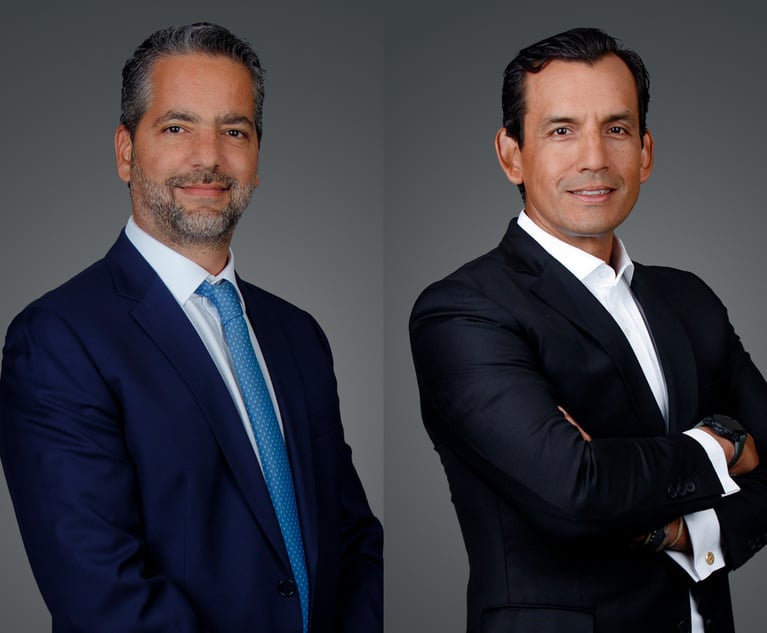UK top 20 squeeze equity ranks as PEP pressure drives prudence
The proportion of equity partners across the UK top 20 is continuing to shrink as law firms tighten their grip on the equity amid ongoing pressure on profits. The UK's 20 largest law firms by revenue have seen the overall proportion of equity partners fall by 12% over the last seven years, with equity partners accounting for 59% of the total partner count in 2012-13, according to Legal Week research. While the number of partners across the top 20 has risen by 31% since 2005-06, the number of equity partners has grown by just 15% over the same period.
September 05, 2013 at 07:03 PM
4 minute read
Post-crunch equity count dives despite broader partnership growth
The proportion of equity partners across the UK top 20 is continuing to shrink as law firms tighten their grip on the equity amid ongoing pressure on profits.
The UK's 20 largest law firms by revenue have seen the overall proportion of equity partners fall by 12% over the last seven years, with equity partners accounting for 59% of the total partner count in 2012-13, according to Legal Week research.
While the number of partners across the top 20 has risen by 31% since 2005-06, the number of equity partners has grown by just 15% over the same period.
However, the magic circle has gone against trend, posting a collective rise in equity partner proportions from 81% in 2005-06 to 85% in 2012-13.
Linklaters in particular has made strides towards a full-equity partnership, with its percentage of equity partners increasing from 77% to 94% in the seven-year period, during which Clifford Chance (CC), Slaughter and May and Allen & Overy have also seen their proportion of equity partners increase.
Slaughters corporate partner Nigel Boardman said: "It is possible that firms at the top end often decide to make culls instead of de-equitisations, resulting in much higher percentages of equity partners. It might also depend on the nature of work the firms focus on – litigation and M&A lawyers could move into the equity quite early, while firms focusing on other practice areas might be able to settle for more salaried partners."
CC senior partner Malcolm Sweeting (pictured) added that top-performing firms may be more confident about investing in their partnerships. "While there hasn't necessarily been a conscious trend toward expansion, the firms at the top end of the scale will have the business plan and confidence to invest for the future," he said.
Disregarding the magic circle, the proportion of equity partners across the top 20 fell from 56% to 47% over the seven-year period.
Firms to have seen the most significant changes include CMS Cameron McKenna, which moved away from its all-equity structure in 2007 with the introduction of a salaried partner tier, resulting in a gradual reduction in equity partner proportions to 50%. However, the firm this year scrapped its salaried partner rank, creating a two-tier partnership comprising fixed-share and full-equity partners.
Senior partner Dick Tyler said: "Our non-equity partners now all share in the firm's profits, which we think is important in creating a cohesive partnership and giving everyone the same incentive."
Other firms to have seen notable changes in their equity partner proportions include DAC Beachcroft, down from 65% in 2005-06 to 47% this year, Ashurst, down from 82% to 64%, and Irwin Mitchell, down from 54% to 39%.
Eversheds managing partner Lee Ranson said: "The figures are I'm sure affected by the relatively low-growth environment we have seen across the sector in the last few years. In such circumstances, firms want to ensure that business cases are sustainable."
Equity partners – key stats
Proportion of equity partners at top 20 in 2005-06 – 67%
Proportion of equity partners at top 20 in 2012-13 – 59%
Proportion of equity partners at magic circle in 2005-06 – 81%
Proportion of equity partners at magic circle in 2012-13 – 85%
For more comment, see An equitable life? Slightly larger pie, fewer slices.
Related:
This content has been archived. It is available through our partners, LexisNexis® and Bloomberg Law.
To view this content, please continue to their sites.
Not a Lexis Subscriber?
Subscribe Now
Not a Bloomberg Law Subscriber?
Subscribe Now
NOT FOR REPRINT
© 2025 ALM Global, LLC, All Rights Reserved. Request academic re-use from www.copyright.com. All other uses, submit a request to [email protected]. For more information visit Asset & Logo Licensing.
You Might Like
View All

Top Labor Lawyer and Former Germany Managing Partner Leaves A&O Shearman to Found Boutique Firm
3 minute read
DLA Piper Appoints New Co-Managing Partners for Peru Office

Trending Stories
- 1New York-Based Skadden Team Joins White & Case Group in Mexico City for Citigroup Demerger
- 2No Two Wildfires Alike: Lawyers Take Different Legal Strategies in California
- 3Poop-Themed Dog Toy OK as Parody, but Still Tarnished Jack Daniel’s Brand, Court Says
- 4Meet the New President of NY's Association of Trial Court Jurists
- 5Lawyers' Phones Are Ringing: What Should Employers Do If ICE Raids Their Business?
Who Got The Work
J. Brugh Lower of Gibbons has entered an appearance for industrial equipment supplier Devco Corporation in a pending trademark infringement lawsuit. The suit, accusing the defendant of selling knock-off Graco products, was filed Dec. 18 in New Jersey District Court by Rivkin Radler on behalf of Graco Inc. and Graco Minnesota. The case, assigned to U.S. District Judge Zahid N. Quraishi, is 3:24-cv-11294, Graco Inc. et al v. Devco Corporation.
Who Got The Work
Rebecca Maller-Stein and Kent A. Yalowitz of Arnold & Porter Kaye Scholer have entered their appearances for Hanaco Venture Capital and its executives, Lior Prosor and David Frankel, in a pending securities lawsuit. The action, filed on Dec. 24 in New York Southern District Court by Zell, Aron & Co. on behalf of Goldeneye Advisors, accuses the defendants of negligently and fraudulently managing the plaintiff's $1 million investment. The case, assigned to U.S. District Judge Vernon S. Broderick, is 1:24-cv-09918, Goldeneye Advisors, LLC v. Hanaco Venture Capital, Ltd. et al.
Who Got The Work
Attorneys from A&O Shearman has stepped in as defense counsel for Toronto-Dominion Bank and other defendants in a pending securities class action. The suit, filed Dec. 11 in New York Southern District Court by Bleichmar Fonti & Auld, accuses the defendants of concealing the bank's 'pervasive' deficiencies in regards to its compliance with the Bank Secrecy Act and the quality of its anti-money laundering controls. The case, assigned to U.S. District Judge Arun Subramanian, is 1:24-cv-09445, Gonzalez v. The Toronto-Dominion Bank et al.
Who Got The Work
Crown Castle International, a Pennsylvania company providing shared communications infrastructure, has turned to Luke D. Wolf of Gordon Rees Scully Mansukhani to fend off a pending breach-of-contract lawsuit. The court action, filed Nov. 25 in Michigan Eastern District Court by Hooper Hathaway PC on behalf of The Town Residences LLC, accuses Crown Castle of failing to transfer approximately $30,000 in utility payments from T-Mobile in breach of a roof-top lease and assignment agreement. The case, assigned to U.S. District Judge Susan K. Declercq, is 2:24-cv-13131, The Town Residences LLC v. T-Mobile US, Inc. et al.
Who Got The Work
Wilfred P. Coronato and Daniel M. Schwartz of McCarter & English have stepped in as defense counsel to Electrolux Home Products Inc. in a pending product liability lawsuit. The court action, filed Nov. 26 in New York Eastern District Court by Poulos Lopiccolo PC and Nagel Rice LLP on behalf of David Stern, alleges that the defendant's refrigerators’ drawers and shelving repeatedly break and fall apart within months after purchase. The case, assigned to U.S. District Judge Joan M. Azrack, is 2:24-cv-08204, Stern v. Electrolux Home Products, Inc.
Featured Firms
Law Offices of Gary Martin Hays & Associates, P.C.
(470) 294-1674
Law Offices of Mark E. Salomone
(857) 444-6468
Smith & Hassler
(713) 739-1250








